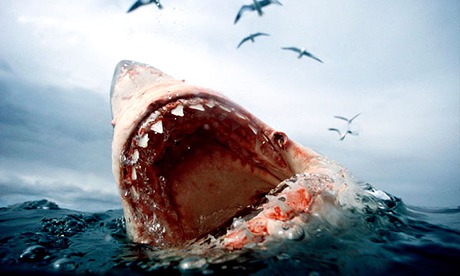
It might be huge, streamlined and powerful, but the great white shark is in danger. An estimated 100 million sharks, including great whites, are killed every year, threatening to throw our oceans, their populations and habitats into disarray. “They’re the balance keeper, they’re like the lion of the ocean,” says Chris Fischer.
As the founder of Ocearch, Fischer is taking action. Since 2007, his non-profit organisation has enabled researchers from institutions worldwide to tag and monitor the movements of around 80 great white sharks and a host of other predators. The result is a wealth of data that not only provides insights into behaviour, but focuses conservation efforts.
“You’ve got to know where [the sharks] mate, you’ve got to know where they give birth, you’ve got to protect the nursery and you’ve got to understand their full range so you can put policy in place across that range,” Fischer explains.
It’s a team effort. Using a bespoke lift fitted to their research vessel, the Ocearch crew traps a shark and brings it – briefly – to the surface. Scientists then have 15 minutes to take blood and parasite samples, body measurements and muscle biopsies, tests that provide clues to the shark’s age, diet and reproductive status. Each shark is also furnished with a number of trackers: an accelerometer to capture data on pitch, roll, depth and tail beats per minute; a pop-up tag to monitor its dive profile; and an acoustic tag to reveal if it ventures near specially placed receivers.
While these last for periods ranging from weeks to months, a SPOT tag attached to the dorsal fin lasts about five years – every time the fin pierces the surface, the tag signals to a satellite, allowing the shark’s location to be pinpointed in near real-time. Together, the tech has yielded a host of insights, including a greater understanding of migration routes and patterns. “Big mature females have a two-year migratory path and the mature males have a one-year migratory path to and from the breeding site,” reveals Fischer. “That’s because the females have roughly an 18-month gestation period so they can’t go to the mating site every year.”
And with the shark’s trackers feeding open-source data to the website, ocearch.org, you too can keep tabs on their movements. “Everything is inclusive,” says Fischer. “That’s how we’re going to turn a charismatic ocean project into a global ocean movement – because we need one of those right now.”

